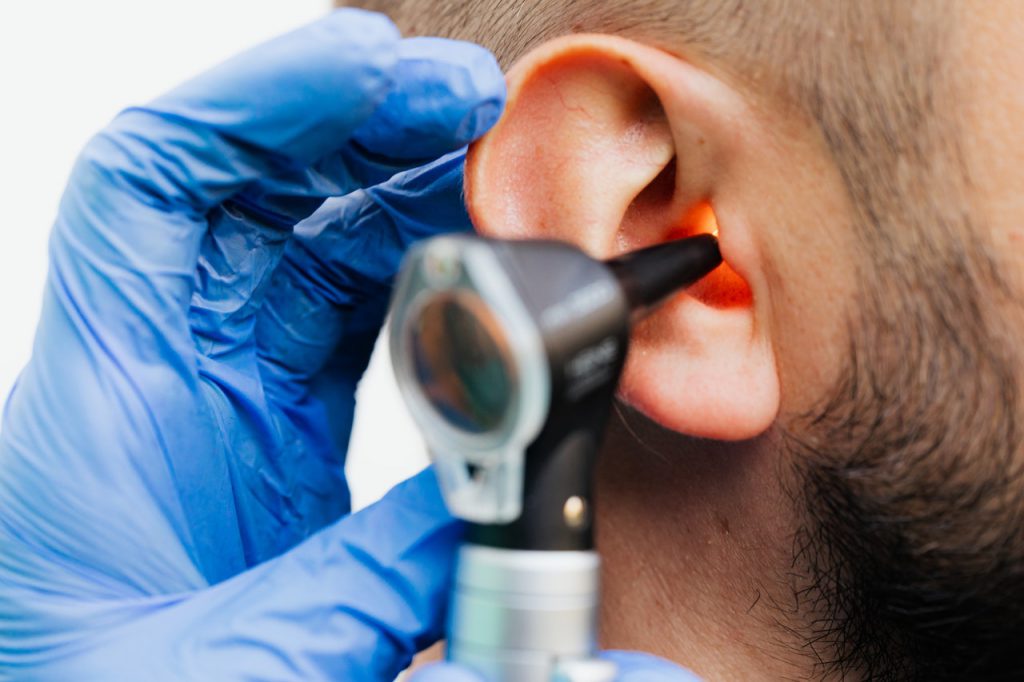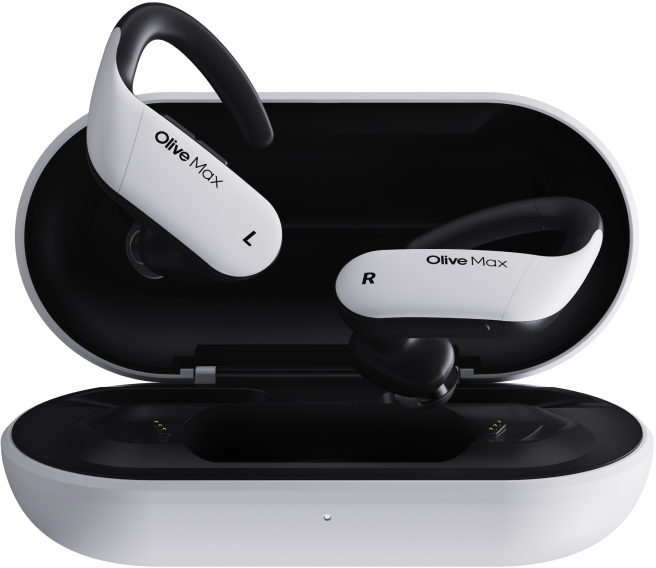
In need of a hearing aid and ready to explore your options? Let us introduce Receiver in the Canal (RIC) hearing aids; the most popular style of hearing aid in the United States today!
What is a Receiver in the Canal (RIC) Hearing Aid?
Also referred to as Receiver-in-the-Ear (RITE) or Canal Receiver Technology (CRT), they are widely available to purchase through your audiologist or hearing professional. All major hearing aid brands manufacture RIC hearing aids, offering at least one option and often a few different models of this popular hearing aid type. RIC hearing aids closely resemble BTE hearing aids, aside from a few differences.
Like BTE devices, RICs have a hard case filled with the hearing aid electronics that is worn behind the ear, and feature an earpiece that is placed in the ear which connects to the hearing aid via tubing, an ear hook, or a thin wire.
BTE devices, however, have the speaker placed inside the hard case along with the rest of the electronics. RIC devices, meanwhile, are an open-fit hearing aid that uses a thin ‘micro’ tube extending from the body of the hearing aid over the outer ear into the ear canal. The speaker is attached to the end of this thin microtube. A small tip sits within the canal (without blocking it) so sound and air can still enter the ear canal naturally.
As generated sound only has to travel a very short distance with lower transmission loss, less sound energy and battery power is required for excellent sound quality.
Why Do People Choose RIC Hearing Aids?
As always, your degree of hearing loss and the level of discretion you need will determine the best type of hearing aid for you.
They are extremely popular amongst hearing aid users due to their discreet size, positioning, and versatility. For one, RICs are smaller than typical BTE devices. Its case is thinner and smaller than the classic earloop, slipping seamlessly behind your ear. You can also customize the color of the case to match your hair or skin tone.
The wire from the body of the hearing aid to the ear canal is tiny and sits along the crease of your face at the ear as well, so others can’t see this either.
Other benefits of RIC hearing aids include larger batteries for longer battery life, no ‘plugged up’ feeling, and the ability to minimize sounds of your own voice by allowing sounds to escape the ear canal. These hearing aids are also said to have a greater ability to reduce feedback at levels higher than other models.
Drawbacks
Nevertheless, its invisibility comes with some drawbacks. The smaller size means less power and shorter battery life compared to a traditional BTE hearing aid.
The RIC’s receiver is also known to fail much more than the BTE. Luckily the problems that usually occur can be avoided and are relatively easy to fix.
With an RIC device you have to accept that your hearing aid might require some maintenance from time to time. As RIC receivers are attached to the main body of the hearing aid by an electronic wire, there is an increased chance that wax or moisture will kill the receiver.
Luckily, this maintenance shouldn’t be too problematic. Replacing the receiver is quite simple! Usually, all you need to do is pull the old receiver out (or slide or remove a pin to remove it) and push a new one in — easy. There are loads of useful Youtube videos showing you how to do this and you should also receive some instructions from your device’s manufacturer.
Are RIC Hearing Aids More Expensive?
Although price ultimately depends on the brand and model of hearing aid that you choose, you shouldn’t find there to be any significant difference in price between RIC hearing aids and other hearing aid types of the same quality level.
This means that you won’t be paying a premium if you opt for an RIC hearing aid, which allows you to base your decision on its advantages and disadvantages rather than price.
Most RICs retail from $1000 to $3200 in the United States.
Take a Quick Online Hearing Test

Are you struggling to hear friends and family during conversations when you’re out and about? Think you might have hearing loss but haven’t gotten around to booking an appointment? The Olive Hearing Test only takes five minutes and can tell you whether you need to take a comprehensive hearing test with your physician or audiologist!
Of course, this is no substitute for a professionally performed in-person test and does not constitute a medical diagnosis. We always recommend that you make an appointment with your physician if you experience any symptoms of hearing loss.
The information in this guide has been written using the following reliable sources:
https://www.hearingreview.com, https://www.hearingaidknow.com, https://www.amplifon.com, https://www.bootshearingcare.com, https://www.hearingaids.com









